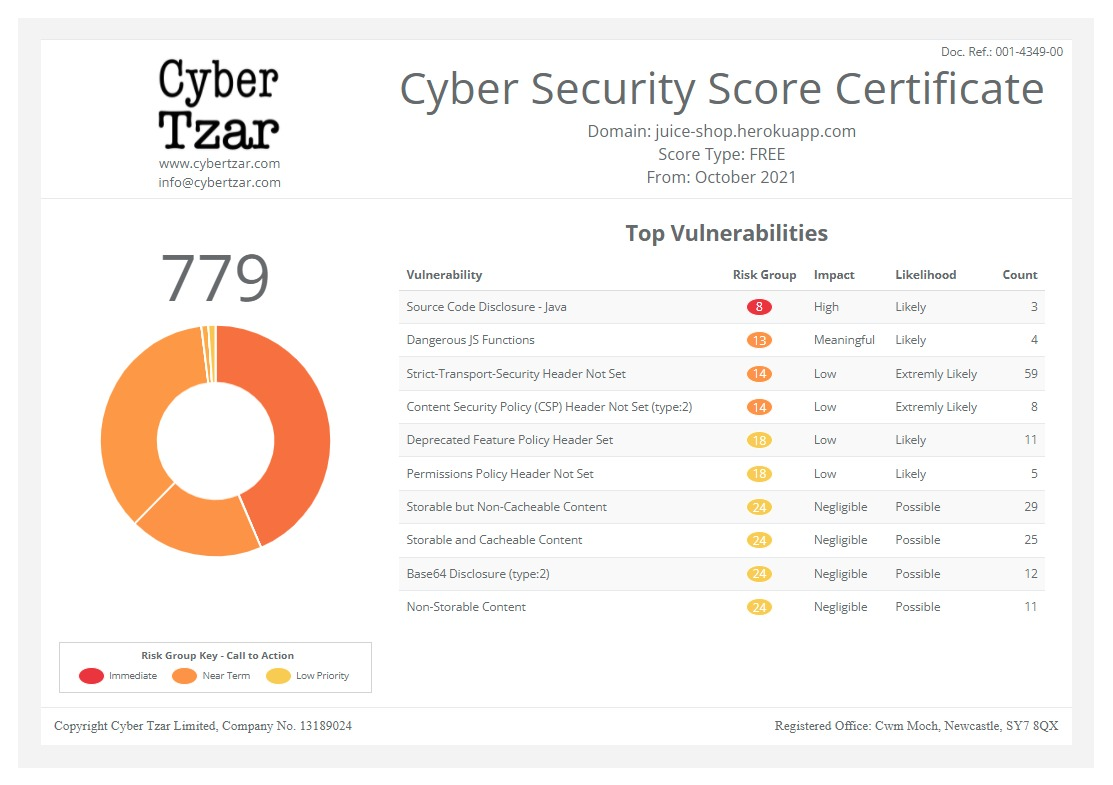Cyber Security News Aggregator
.Cyber Tzar
provide acyber security risk management
platform; including automated penetration tests and risk assesments culminating in a "cyber risk score" out of 1,000, just like a credit score.Finding the right HVM strategy
published on 2025-02-17 08:23:00 UTC by James HumphreysContent:
Deborah Ainscough, Founder and Director of Crowdguard, explains why Hostile Vehicle Mitigation (HVM) is much more than just vehicle safety barriers.
When most people think of Hostile Vehicle Mitigation (HVM), they picture Vehicle Security Barriers (VSBs). While these barriers play a critical role in protecting events, they are only one piece of the puzzle.
As safety advisory groups, local authorities and law enforcement increasingly request HVM measures for events, understanding their full scope is essential for effective security planning.
HVM measures are the integrated deployment of security processes, procedures and physical obstructions to counter vehicle borne threats.
They typically include; deterrent communications, security awareness, incident response planning and training, operational security, traffic management and the deployment of physical obstructions such as vehicle security barriers and traffic calming measures.
In other words, Hostile Vehicle Mitigation (HVM) is not just about placing a series of Vehicle Security Barriers (VSBs) around the perimeter of your event, but rather it is a comprehensive safety solution that involves planning, communication and co-ordination with all stakeholders, detailed risk assessments, threat analysis and then – finally – the deployment of the most appropriate VSBs to protect the public from the threat of a hostile vehicle incursion.
The vital thing to understand about a HVM solution is that its key function is to create TIME.
Time – often vital seconds – for the police, event security and/or stewards to get people to safety from the area, to implement a response plan and start the evacuation process.
Process and strategy
We have a robust HVM risk assessment process, based on the experience of our counter-terrorism experts.
Our HVM risk assessment methodologies enable us to analyse threat, vulnerability and risk using insight into how terrorists select a target.
Where necessary, we will also carry out a detailed Threat Vulnerability and Risk Assessment (TVRA), alongside a Vehicle Dynamics Assessment (VDA), which will provide event organisers with an additional layer of information of how to best protect their event.
With this venue- or event-specific analysis, we provide a tailored approach to risk mitigation, advising you on the most appropriate and proportionate HVM solutions to help you protect people and assets.
Deploying proportional HVM solutions tailored to the size and nature of these events ensures a balance between public safety and the accessibility required for community participation.
Crowdguard’s Plan, Provide, Protect framework delivers comprehensive event security:
- Plan: Expert Risk assessments including Threat Vulnerability Risk and Vehicle Dynamic assessments with full HVM design and specification
- Provide: Access to a diverse range of HVM solutions ensures tailored, effective deployments
- Protect: Certified, rated HVM solutions and ongoing support guarantee enduring safety – all part of our ‘Protection in Partnership’ mantra
By leveraging these pillars, Crowdguard ensures safe, well-managed events, allowing visiting crowds to enjoy the event, safe in the knowledge that they are protected from a hostile vehicle incursion.
Understanding and owning risk
While it’s impossible to completely eliminate risk, we help event organisers identify vulnerabilities and understand any residual risks.
This enables them to make informed decisions aligned with their risk appetite by balancing necessary precautions with practical considerations.
We use the testing information in the National Protective Security Authority’s Catalogue of Security Equipment (NPSA CSE) to ensure that the most appropriate vehicle security barriers are deployed.
This information also enables us to explain to the end user the residual risk, based on what the achievable approach speeds are through carrying out a vehicle dynamics assessment.
One size does not fit all
We believe that there is no single solution for every event.
Each event has a different location, timing, risk profile, ingress/egress routes, crowds will behave differently at a music concert than they will at a football match.
This is why we work closely with all stakeholders and traffic management companies to carry out a comprehensive TVRA before deciding which kit to deploy, and where – ensuring a proportionate installation that minimises disruption but ensures that an event and its attendees are protected.
Crowdguard only deploys equipment that is tested and listed in the NPSA CSE.
We have access to a large range of equipment that enables us to ensure we can work with your operational requirement and operational budgets.
Choosing the right partner
Ultimately, your HVM strategy is only as good as your installation partner and the advice that they give you.
Choosing an HVM security partner that is a member of a Professional Association, such as the Perimeter Security Suppliers Association (PSSA), or the RSES, and is professionally qualified (CSyI holder), as well as seeking advice from a Counter Terrorism Security Advisor (CTSA), or National Counter Terrorism Security Office (NaCTSO) will come with a number of safeguards, adherence to internationally-recognised standards and, most importantly, give you peace of mind that your HVM solution is the most proportionate, effective, and will keep your event as safe as possible, in the event of a hostile vehicle incursion.
This article was originally published in the February 2025 Edition of Security Journal UK. To read your FREE digital edition, click here.
https://securityjournaluk.com/finding-the-right-hvm-strategy/
Published: 2025 02 17 08:23:00
Received: 2025 02 18 19:23:23
Feed: Security Journal UK
Source: Security Journal UK
Category: Security
Topic: Security
Views: 16
